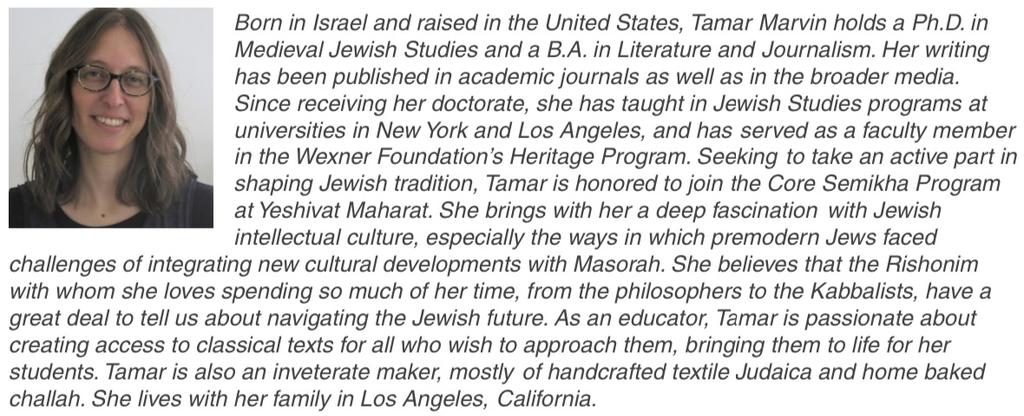
1 Av 5782 | July 29, 2022
Parshat Matot-Masei
Dr. Tamar R. Marvin
Class of 2024
Parashat Masei opens with an account of the places where Bnei Yisrael encamped during their forty years of wandering. Interestingly, the Torah immediately records the very command to record this national trajectory:
And Moshe wrote down the points of departure of their journeys at the command of G-d; these are the points of departure of their journeys.
It proceeds to detail each stop from Rameses in Egypt to Arvot Moav, where a new generation prepares to cross the Yarden into Eretz Yisrael. We are reading the very record Moshe was so purposefully instructed to write.
The Torah expends a lot of words on the account of masei Bnei Yisrael, the journeys of Bnei Yisrael, although it duplicates information we have already encountered throughout Shemot and Bemidbar. If we are inclined to do so, those of us with a historicist bent could easily reconstruct for ourselves the Jews’ itinerary from Egypt to Israel. And those who aren't inclined, well, they wouldn't have to sit through a long, dry list of place-names. Why is Moshe commanded to gather this geographical data for us here?
This question is all the more pointed when we consider that, by the Tanach’s own account, many ancient Jewish histories have been lost to us. A number of other historical books are referenced within the Tanach itself: ספר מלחמות ה (The Book of the Wars of Hashem) in Bemidbar 21:14; ספר דברי הימים למלכי ישראל (The Chronicles of the Kings of Yisrael) and ספר דברי הימים למלכי יהודה (The Chronicles of the Kings of Yehudah) in Melachim Alef 14:19, 29 and several other places; and lost books of prophets, including, among others, those of Nathan, Shemaiah, and possibly even Eldad and Medad. These are all unknown to us today. Some Jewish histories are recorded for all time while others are not.
The historian Yosef Hayim Yerushalmi, in his seminal book Zakhor: Jewish History and Jewish Memory, contrasts Greek (i.e., Western) historiographical practices to Jewish ones, arguing that a distinguishing characteristic of Jewish thought is its insistence that history is meaningful. The historical narratives included in Tanach, then, are not merely informative but bear higher meaning that we are intended to unpack.
Ramban’s explanation of the aforementioned Book of the Wars of Hashem offers us a way to distinguish between which histories are meaningful and worthy of record and which are not:
שהיו בדורות ההם אנשים חכמים כותבים ספר המלחמות הגדולות כי כן בכל הדורות ובעלי הספרים היו נקראים מושלים שנושאים בהם משלים ומליצות והנצחונות הנפלאים בעיניהם מיחסים המלחמות ההם ליקוק כי לו המה באמת.
In those days there were wise men who wrote down the narratives of the great wars, as it has been in every generation, and the authors of such works were known as fabulists, because they included parables and literary expressions; and those victories that they saw as wondrous, they attributed to Hashem, as they truly are.
According to Ramban, these lost chronicles did recognize meaning in history: they attributed extraordinary deeds to G-d. But this recognition was shallow; as a work, the Book of the Wars of Hashem is a lot like Yerushalmi's description of Greek histories, reflecting “Hellenic curiosity to know and to explore,” seeking only “moral examples or political insights.” Similarly, The Book of the Wars of Hashem, if bearing the vague imprint of the Jewish approach to history, remained a mundane chronicle, embellished by ornamental prose and fabulous tales. It was accordingly not handed down in the line of mesorah.
The “chronicle” that opens Masei, meanwhile, is part of the holy Torah. It asks us to look back, take stock, and remember where we’ve been, including the many missteps and shortfallings we’d rather forget. It insists that the details matter—in all their inglorious particularity—because the journey, the process itself, matters.
It could have, after all, gone another way. The trek from Egypt to Israel includes a critical juncture after which Bnei Yisrael’s trajectory skews from its originally intended, more perfect timeline. The first segment of the journey takes us from Rameses in Egypt to Chorev in Midbar Sinai, where Bnei Yisrael receive the Torah, and up to Ritma. This was always the plan. (Chet ha-Egel, the sin of the Golden Calf, is of course an enormously significant juncture, but it does not change the course of history.)
The historical disruption occurs in Ritma (better known as Kadesh Barnea) with Chet ha-Meraglim, the sin of the spies. Were it not for the skepticism of the scouts, the generation of Yetziyat Mitzrayim would have prepared to enter the Land. As Rav Soleveitchik put it in his 1974 derash on Behaalotcha, “Moshe was certain – there was not even a shadow of doubt in his mind – that he was going to enter the promised land. He and the entire congregation will be classified as both Yotz’ei Mitzrayim (departers from Egypt) and Ba’ei ha’Aretz (those who come into the Land).” Instead, the generation that had come out of Egypt was consigned to die out and Moshe, too, with them, before a new generation could enter the Land.
The subsequent years of hapless wandering between Kadesh and Arvot Moav were a result of the sin, not part of the original plan, as the journey until Kadesh was. And yet they are written here together, as one narrative, as what was. The arrow of time, at least from our human perspective, is irrevocable. Any Jewish future must depend on the realities of the past.
Here, then, is our chance: not to dwell on what might have been, but to appreciate the truth of what was. To understand what happened and how we might move forward. So we pause to read each stop along our journey, to experience it as a whole and probe the meaning of this stretch of the path in our centuries-long story.




